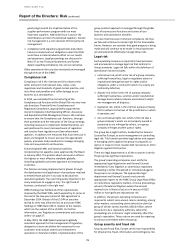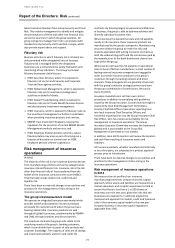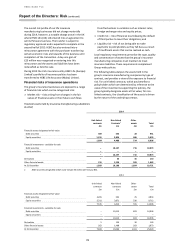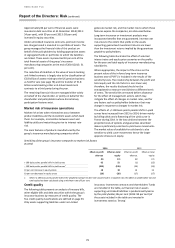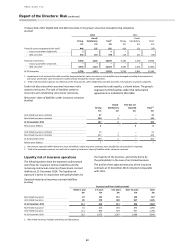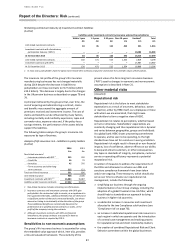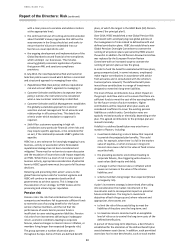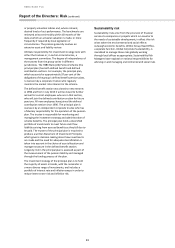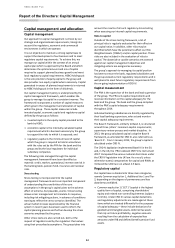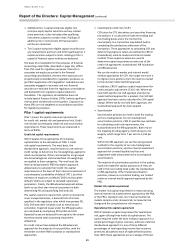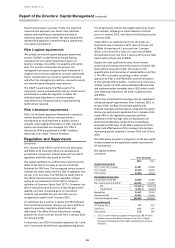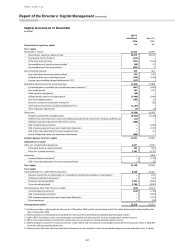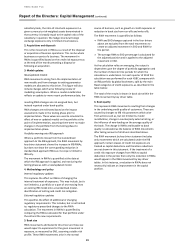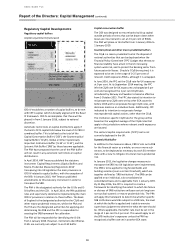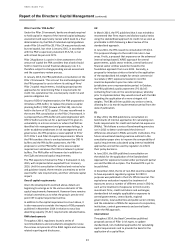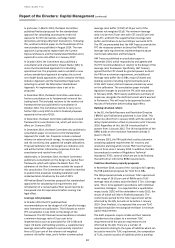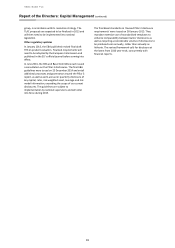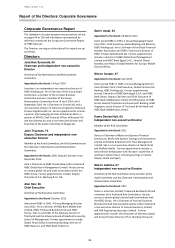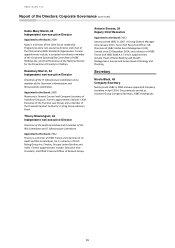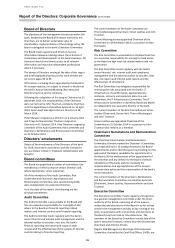HSBC 2014 Annual Report Download - page 88
Download and view the complete annual report
Please find page 88 of the 2014 HSBC annual report below. You can navigate through the pages in the report by either clicking on the pages listed below, or by using the keyword search tool below to find specific information within the annual report.
HSBC BANK PLC
Report of the Directors: Capital Management (continued)
86
three financial years’ revenues. Finally, the advanced
measurement approach uses banks’ own statistical
analysis and modelling of operational risk data to
determine capital requirements. We have adopted the
standardised approach in determining our operational
risk capital requirements.
Pillar 2 capital requirements
We conduct an internal capital adequacy assessment
process (‘ICAAP’) to determine a forward looking
assessment of our capital requirements given our
business strategy, risk profile, risk appetite and capital
plan. This process incorporates the group’s risk
management processes and governance framework. A
range of stress tests are applied to our base capital plan.
These, coupled with our economic capital framework
and other risk management practices, are used to assess
our internal capital adequacy requirements.
The ICAAP is examined by the PRA as part of its
supervisory review and evaluation process, which occurs
periodically to enable the regulator to define the
individual capital guidance or minimum capital
requirements for the group and our capital planning
buffer where required.
Pillar 3 disclosure requirements
Pillar 3 of the Basel regulatory framework is related to
market discipline and aims to increase market
transparency by requiring them to publish, at least
annually, wide-ranging information on their risks and
capital, and how these are managed. Our Pillar 3
Disclosures 2014 are published on HSBC’s website,
www.hsbc.com, under ‘Investor Relations’.
Regulation and Supervision
(Unaudited)
On 1 January 2014, CRD IV came into force and capital
and RWAs at 31 December 2014 are calculated and
presented on the group’s interpretation of final CRD IV
legislation and final rules issued by the PRA.
The capital and RWAs on a CRD IV basis incorporate the
effect of the PRA’s final rules as set out in the PRA
Rulebook for CRR firms. This transposed various areas of
national discretion within the final CRD IV legislation into
UK law. In its final rules, the PRA did not adopt most of
the CRD IV transitional provisions available, instead
opting for an acceleration of the CRD IV end point
definition of Common Equity Tier (‘CET’) 1. However, the
CRD IV transitional provisions for unrealised gains were
applied, such that unrealised gains on investment
property and available-for-sale securities are not
recognised for capital until 1 January 2015.
For additional tier 1 and tier 2 capital, the PRA followed
the transitional provisions timing as set out in CRD IV to
apply the necessary regulatory adjustments and
deductions. The effect of these adjustments is being
phased in at 20 per cent per annum from 1 January 2014
to 1 January 2018.
Furthermore, non-CRD IV compliant additional tier 1 and
tier 2 instruments benefit from a grandfathering period.
This progressively reduces the eligible amount by 10 per
cent annually, following an initial reduction of 20 per
cent on 1 January 2014, until they are fully phased out by
1 January 2022.
Under CRD IV, as implemented in the UK, banks are
required to meet a minimum CET1 ratio of 4.0 per cent
of RWAs (increasing to 4.5 per cent from 1 January
2015), a minimum tier 1 ratio of 5.5 per cent of RWAs
(increasing to 6 per cent from 1 January 2015) and a total
capital ratio of 8 per cent of RWAs.
Despite the rules published to date, there remains
continued uncertainty around the amount of capital that
banks will be required to hold. This relates to the
quantification and interaction of capital buffers and Pillar
2. The PRA is currently consulting on their revised
approach to Pillar 2, the PRA Buffer and the interaction
of this with the CRD IV buffers. Furthermore, there are a
notable number of draft and unpublished EBA technical
and implementation standards due in 2015 which could
have additional impacts on the bank’s capital position
and RWAs.
CRD IV also introduced the leverage ratio to supplement
risk-based capital requirements from 1 January 2018. In
January 2014, the Basel Committee published its
finalised leverage ratio framework, along with the public
disclosure requirements applicable from 1 January 2015.
Under CRD IV, the legislative proposals and final
calibration of the leverage ratio are expected to be
determined following a review of the revised Basel
proposals and the basis of the EBA’s assessment of the
impact and effectiveness of the leverage ratio during a
monitoring period, between 1 January 2014 and 30 June
2016.
The table below provides a comparison of the key capital
numbers based on the applicable capital requirements
for each period.
Key capital numbers
(Unaudited)
At 31 December
2014
2013
Capital resources (£m)
CET 11 /Core Tier 1 Capital
21,091
22,438
Tier 1 Capital
25,138
24,108
Total Capital
33,556
33,543
Risk Weighted Assets (£m)
Counterparty Credit Risk
30,364
16,450
Non-Counterparty Credit Risk
168,600
129,459
- IRB
137,206
100,159
- Standardised
31,394
29,300
Market Risk
22,437
17,931
Operational Risk
22,251
22,039
Total Risk Weighted Assets
243,652
185,879
Capital Ratios (%)
CET 1/Core Tier 1
8.7
12.1
Total Tier 1
10.3
13.0
Total Capital
13.8
18.0
1 CET 1 is a new measure of capital introduced by CRD IV which
replaces the previous Basel 2 measure, Core Tier 1. Capital
measures introduced by CRD IV differ significantly to previous
measures.


